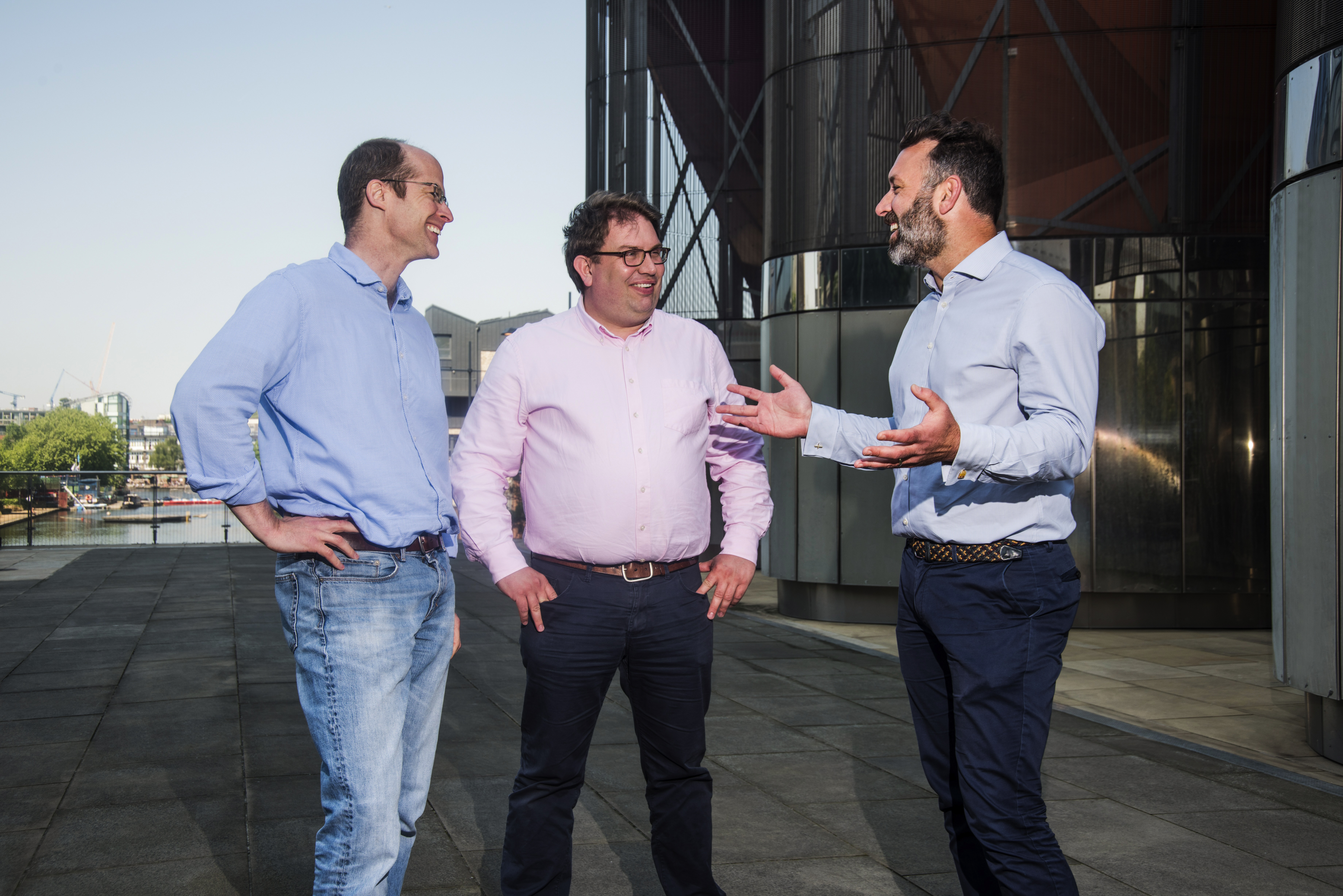
The new boss of ITS America is fizzing with ideas. Shailen Bhatt talks to Adam Hill about the need to rebrand the ITS industry, how technology can leverage tax dollars – and where the Star Wars universe fits in to his philosophy.
Shailen Bhatt has a big job on his hands. The CEO and president of the Intelligent Transportation Society of America is the second to hold the post in two years following the resignation last July of his predecessor Regina Hopper. It has not been the easiest time for the not-for-profit organisation, which has admitted that there was some rebuilding to do. Bhatt comes with a considerable pedigree. He was executive director of the
Bhatt is a lifelong public servant and has spoken candidly of his sadness at leaving the public sector, calling it a “bittersweet day”. Rather winningly, he spoke of the “nobility” of public service. “There has almost been a demonisation of the public sector in recent years,” he says sadly in his first interview with ITS International. “The majority of public servants choose to give their careers to serving their city, province or state. It’s nice to be around people with that mindset. I feel for nearly the last decade I’ve been going in to work feeling I was going to save lives or make people’s lives better.”
Heavy hitter
The good thing from his point of view is that he sees
ITSA has, in short, landed itself with a heavy hitter. Bhatt took over in December from interim boss David St. Amant, who stepped into the breach on a mission to rebuild expertise within the association when Hopper left.
“It’s been a whirlwind since they announced me [at the
Facing challenges
As you might expect, he has not let the grass grow at ITS America: since coming on board there have already been quite a number of alterations to its internal structure. “Quite a lot of those changes are designed to provide better customer service,” he explains. “There are a number of challenges in the organisation: we need to build the team here and make sure we’re firing on all cylinders.”
He suggests that perhaps a change in the way we refer to the ITS sector is overdue: his reasoning is that the first two letters, ‘IT’, are associated in many people’s minds with computers that don’t work. “But we’re talking about connected vehicles, Hyperloop and drones,” he enthuses. “We need a gradual rebrand of what ‘ITS’ means.”
The sector is a hot topic in itself, Bhatt believes. He recalls his early days in the industry, when his occupation tended to be a conversational turn-off at social gatherings. “People quickly found a reason to go away and top up their drink,” he laughs. “But now when I tell people I’m in transportation, they want to hear: there is a fizzle and excitement about what’s possible.”
Growing pains
That excitement is tempered with realism. “This is the leading edge of a disruption which is equivalent to the Industrial Revolution, but accelerated,” he insists. The switch from a society dependent on car transport to one where the broader concept of mobility is the key will not be straightforward. “We must recognise that there will be growing pains,” Bhatt adds. “We need to be clear-eyed about what risks we’re taking on through the benefits of technology.”
Cybersecurity is a drum that he does not apologise for banging. During his time in Delaware he had frequent contact with the multinational financial institutions that are based there. “Those big banks have been hacked,” he says. The same goes for federal government institutions: the threat is real. “I don’t think it’s responsible to assume that transport companies and car companies are immune to this threat,” he says.
The fact that cybersecurity is such a prominent subject shows how much has changed in a short time. “When I got started in the early 2000s, ITS meant big signs over the highway,” he recalls. “In 2014 in Detroit they put me in a car and the driver took his hands off the wheel.” Just a few years after that, trials of driverless trucks are under way. The speed of change is considerable, and the prospects are enticing – although the big picture is far from clear.
“We don’t really know what the future will hold,” Bhatt says. “Some people tell me we’re at ‘peak road’, that vehicle miles travelled will fall. Other folks say that autonomous vehicles will lead to massive gridlock.”
Lively presence
There will be no shortage of voices now keen to have his ear: sorting out which to listen to will be the real issue. Bhatt is certainly keen to be engaged with ITSA members and others in the industry: he is a lively presence on Twitter (@Bhattman_ITSA), freely referencing movies in his often self-deprecating posts – the monochrome clip of him in a tuxedo, mock-imperiously riding a scooter through a show hall, is well worth a look. “I’m also a James Bond fan,” he explains. “If Mr [Daniel] Craig ever decides to hang it up, it might be time for an ITS professional to take over. Or at least I could play Q.”
Bhatt demonstrates a true fan’s understanding of the lore of Star Wars on Twitter, and talks happily of being a “true nerd”. He saw Return of the Jedi at the cinema as a child and was entranced: “It’s such a fantastic world.”
The thing is, Bhatt believes that the possibilities he saw then are now with us. Of course, he doesn’t mean that people will be literally flying the Millennium Falcon anytime soon – but that there are means of travel within reach which would have been unthinkable in the 1980s. “I’ve always had quite an imagination,” he muses. One imagines he has always been blessed with belief in himself too.
His own man
Indeed, ITS America members and workmates should be aware that Bhatt is also very much his own man. He is not afraid to plough his own furrow: when the first Lord of the Rings movie came out, he went to see it dressed as Radagast the wizard. While this character appears in the books, he is not actually in that first film. Bhatt did not care a jot about the resulting confusion. “Everyone said: ‘Are you Gandalf?’ I was very haughty in my response.” He’s described himself (perhaps half-jokingly) as a “type A personality, kind of a control freak”. “My wife hates driving with me,” he laughs. “I always have an opinion on a better route. I get into work early, I stay late. But I’m a self-aware Type A: I can recognise when I’m going too far or pushing too hard.”
‘Crumbling infrastructure’
He may need this in-built alarm because his in-tray will certainly be full this year. These are interesting times for transportation: in January’s State of the Union address, US president Donald Trump pledged $1.5 trillion to solve the US’s “crumbling infrastructure”.Details have yet to be fleshed out – although it seems likely that the programme will revolve around $200 billion of federal money, with local and regional investment (and “where appropriate” the private sector) bulking out the total to that $1.5 trillion figure. “For decades the US has been under-investing in infrastructure,” Bhatt says. “There are 21st century solutions out there. We need to not just look at 20th century solutions to safety and transport. For 50 years the solution has been to build ‘more roads, wider roads’.”
Trump has talked about the importance of “leveraging” taxpayers’ money with additional capital – and that represents a major opportunity for the ITS industry, Bhatt believes: “If you want to leverage dollars, there’s no better tool in your toolbox than ITS technologies. If you want to talk about smart mobility, you need to look at incorporating technology.”
Bhatt is funny, can laugh at himself and has – as we have seen - an excellent knowledge of popular culture. His CV, which is chock-full of top-level transportation experience, looks very good too. His demeanour suggests great self-confidence, but there is a seriousness behind the warmth. ITS America has not had the easiest time of late and will be looking forward to seeing where he might take it. What the organisation has got is a leader who likes to lead. So there you have it - Shailen Bhatt: a new hope.
Smart cities: common threads
Shailen Bhatt, CEO and president of ITS America, has come from the Department of Transportation in Colorado, a state with six million residents, to an organisation which is responsible for advancing the development and deployment of intelligent transportation technologies throughout the US. He is adamant that a single blueprint for urban mobility does not exist. But his experience at 2016’s ITS World Congress in Australia offers one big clue. “When I was in Melbourne, if I heard it once then I heard it 20 times, that Melbourne ‘is the most liveable city in the world’,” he recalls.
Citizens of arch-rival Sydney might disagree, but Melbourne (below) has made much of its tram system, its green spaces, and walkability, along with more innovative ideas such as its ‘Internet of Trees’ initiative, which sought to improve the urban tree canopy for residents. Bhatt’s point is that being ‘liveable’ is perhaps truly what it means to be a smart city. “There is not a one-size-fits-all solution but there are common threads that you can knit together,” he says.
To illustrate the idea, Bhatt reels off the key points of other urban authorities’ attempts to improve their own liveability. “In Copenhagen there’s a focus on cycling and on green technologies,” he points out. In Singapore, tunnel excavation projects are a potential means of easing congestion, while in Los Angeles – which will host the 2028 summer Olympics – “they are talking about transforming a city that has been gridlocked for decades through technology”.
The technology that will enable widespread vehicle connectivity is not enough without sound planning,
however. “With Big Data, we want to make sure that the
investments we are making are smart investments,”
he adds.
Shailen Bhatt: at a glance
2018 ITS America, CEO and president
2015 Colorado DoT, executive director
2011 Delaware DoT, cabinet secretary
2009 Federal Highway Administration, associate administrator for policy and government affairs












